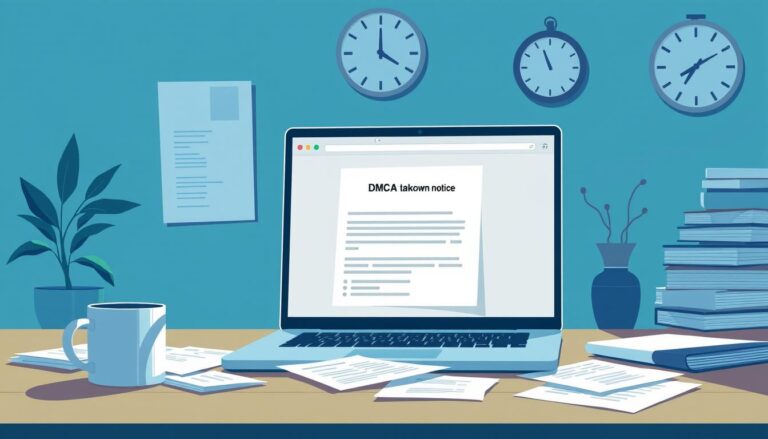Understanding Intellectual Property Rights in the Digital Age
Did you know that copyright piracy alone cost the United States an astonishing $12.4 billion in lost revenue back in 2003? This staggering sum not only highlights the economic implications of intellectual property rights but also underscores the urgent need for robust protection measures in today’s digital landscape. As the digital age continues to evolve, so too do the challenges associated with safeguarding your creative works and innovations.
In this comprehensive guide, you will gain invaluable insights into the multifaceted world of intellectual property rights, crucial for creators, entrepreneurs, and businesses alike. Understanding Intellectual Property Rights in the Digital Age is more than just a legal concept; it’s an essential framework that fosters creativity, innovation, and economic growth. You will explore the various types of intellectual property, including copyrights, patents, trademarks, and trade secrets, as well as the emerging legal frameworks that affect digital age IP rights.
As you navigate through this guide, you will discover the importance of protecting your intellectual property, the challenges posed by digital technologies, and the strategies you can implement to defend your creative assets in an increasingly complex online environment.
Key Takeaways
- The digital age has created vast opportunities for creators and businesses to protect their works.
- IP rights are essential for fostering innovation and encouraging economic growth.
- Copyright piracy significantly impacts various industries, including film and music.
- Protecting intellectual property rights encourages competition and creativity.
- Understanding the legal frameworks surrounding IP is vital for creators in the digital landscape.
- Brands can leverage trademarks effectively within e-commerce to safeguard identity.
Introduction to Intellectual Property Rights
Intellectual property rights encompass essential legal frameworks designed to protect creations of the mind. This includes inventions, artistic works, designs, and symbols. Understanding the introduction to intellectual property rights is vital for creators and businesses alike. These frameworks enable creators to secure fair compensation for their contributions and sustain the creative landscape.
The importance of intellectual property rights cannot be overstated. They play a critical role in fostering creativity and innovation, particularly in the digital era. With advancements in technology, the risk of intellectual property infringement has surged, making it necessary to navigate both national and international laws governing these rights.
In the current landscape, challenges arise from the ease of copying and distributing digital content. Digital Rights Management (DRM) serves as a crucial measure in protecting this content. Robust intellectual property rights not only protect the interests of creators but also encourage continuous innovation and contribute to economic and cultural development around the globe.
Types of Intellectual Property in the Digital Age
Understanding the various types of intellectual property is essential in today’s digital landscape. Each category offers distinct protections that adapt to the evolving technology and market demands. Intellectual property not only safeguards the rights of creators but also fosters innovation and creativity across several sectors.
Copyrights
Copyright laws offer protection to authors and creators of literary, musical, and artistic works. This form of intellectual property grants exclusive rights, which include the right to copy, adapt, publish, perform, display, and digitally transmit works. The range of copyrighted material stretches from books and music to software and audiovisual content, reflecting the diverse nature of creative output in the digital age copyright laws.
Patents
Patent rights in technology safeguard new inventions and innovations. This category encompasses the protection of unique processes, machines, and compositions. As advancements in technology, such as artificial intelligence, emerge, the landscape of patent rights evolves. Businesses need to be proactive in filing patent applications to secure their innovations and stay competitive.
Trademarks
Trademarks are crucial for establishing brand identity and protecting against discrepancies in the marketplace. Digital trademark issues arise frequently, especially with the rise of brand impersonation on social media. Registered trademarks provide businesses with exclusive rights, which are essential for maintaining a brand’s integrity and reputation in the digital environment.
Trade Secrets
Trade secrets involve proprietary information that gives a business a competitive edge, such as formulas, processes, and customer lists. Protecting trade secrets requires robust confidentiality measures and vigilance against potential leaks. In a competitive landscape, maintaining the confidentiality of valuable information is crucial for businesses to thrive.
| Type of Intellectual Property | Protection Offered | Examples |
|---|---|---|
| Copyrights | Exclusive rights to reproduce and distribute | Literary works, music, software |
| Patents | Exclusive rights for inventions and processes | New technologies, machinery |
| Trademarks | Protection against brand impersonation | Logos, brand names |
| Trade Secrets | Protection of proprietary information | Formulas, customer lists |
Understanding Intellectual Property Rights in the Digital Age
The landscape of intellectual property rights has undergone notable transformation, reflecting the demands of a digital era. This evolution of intellectual property rights illustrates how laws adapt to new technologies, protection methods, and creators’ needs. As digital platforms proliferate, they introduce complexities not seen in previous decades, leading to unique legal challenges.
The evolution of IP rights
Intellectual property rights began primarily as a means to protect creators’ original works and promote innovation. Copyright law has evolved to grant creators exclusive rights, controlling reproduction, distribution, and derivative creation. The introduction of digital technologies has necessitated new measures. For example, Creative Commons licenses now empower individuals to share their work flexibly while retaining specific rights. Regular enforcement of these rights through monitoring mechanisms plays an essential role in combating infringement.
Challenges posed by digital technologies
The rise of digital platforms has significantly impacted the protection of intellectual property, creating several challenges of protecting IP online. The ease of copying and sharing content has increased the risk of copyright infringement. According to the United States Patent and Trademark Office, there has been a 15% rise in copyright cases linked to online content. Digital Rights Management (DRM) solutions are gaining traction, projected to reach $4.03 billion by 2025, as creators seek technological tools for safeguarding their works and enforcing usage compliance.
The global marketplace is now more innovative, with the World Intellectual Property Organization reporting a 20% increase in patent applications, particularly in software and algorithms, due to the rapid growth of the tech sector. Establishing clear copyright agreements is also vital for collaboration among researchers and institutions, ensuring proper recognition of ownership in a shared digital environment.
| Year | Increase in Trademark Applications (%) | Rise in Copyright Cases (%) | Global Music Revenue Increase (%) |
|---|---|---|---|
| 2020 | 10% | 15% | 7.4% |
| 2021 | N/A | N/A | N/A |
This evidence highlights an urgent need for robust frameworks to ensure creators’ rights are upheld while fostering an environment that encourages ongoing innovation.
Importance of Intellectual Property Rights
The significance of intellectual property rights extends beyond mere protection of ideas. Implementing strong IP laws plays a vital role in fostering creativity and innovation. When creators believe their ideas will remain safe from theft and misuse, they are more motivated to develop new concepts and solutions.
Fostering creativity and innovation
The importance of IP rights is evident in how they incentivize individuals to create. By providing exclusive rights to inventions, brands, and original works, IP laws encourage inventors and artists to explore new horizons. This not only supports individual creativity but enhances the market with innovative products and services.
Economic benefits of IP protection
The economic benefits of IP protection are substantial. Industries that rely heavily on intellectual property contribute significantly to job creation and economic growth. These sectors attract investments, which further drives innovation and entrepreneurial activities. In the digital age, companies safeguarding their intellectual property can secure a competitive edge and bolster their market position.
| IP Type | Protection Offered | Duration |
|---|---|---|
| Patents | Exclusive rights to make, use, and sell an invention | Typically 20 years |
| Trademarks | Protection for brand names, logos, and identifiers | Indefinite, with renewal |
| Copyrights | Exclusive rights over original works | Life of the author plus 70 years |
| Trade Secrets | Protection for confidential business information | Indefinite, until disclosed |

Digital Age Copyright Laws
The transformation brought by digital technologies has significantly impacted copyright laws. Businesses and creators must navigate complex legal landscapes to protect their intellectual property effectively. Key amendments and implications arise as outdated laws face scrutiny in this new environment.
Key amendments and their implications
Recent updates to copyright rules aim to adapt to the realities of the digital age copyright laws. These changes often focus on protecting digital databases, software, and other online content. As a result, creators benefit from enhanced protections, particularly concerning unauthorized use. Notably, rulings such as those from the U.S. Supreme Court regarding software copyright laws illustrate the shifting landscape of intellectual property rights.
- Increased protection for digital content and databases.
- Emphasis on fair use guidelines to balance creativity and protection.
- Creative Commons Licensing allows controlled access for various uses.
Digital content and copyright enforcement
The rapid spread of digital content presents significant challenges in copyright enforcement. The ease of copying and sharing raises the risk of infringement, contributing to a substantial rise in piracy. Digital Rights Management (DRM) technologies and watermarking have emerged as strategies to combat these issues. Nonetheless, enforcement remains complicated, particularly when considering cross-border and jurisdictional challenges.
- Involvement of technologies like blockchain offers potential monitoring solutions.
- International collaboration is essential for consistent enforcement.
- Strong security policies aid in protecting intellectual property from unauthorized distribution.
Challenges of Protecting IP Online
The digital landscape presents unique challenges of protecting IP online that require immediate attention. One critical issue facing creators and businesses today is the rise of online piracy. This illegal activity involves the unauthorized copying, distribution, and downloading of copyrighted materials, directly threatening the livelihoods of artists, authors, and innovators. The continuous growth of digital platforms has made it increasingly difficult to control how content is shared and consumed.
Rise of online piracy
Online piracy undermines the creative efforts of individuals and businesses, resulting in significant financial losses across industries. The existence of laws such as the Digital Millennium Copyright Act (DMCA) reflects attempts to curb this infringement, yet challenges remain. As more content becomes available online, the temptation to engage in piracy expands, heightening the risk for IP holders. Understanding the legal landscape and aligning strategies to combat the rise of online piracy is essential for safeguarding intellectual property.
Domain name infringement and trademark issues
Domain name infringement presents another layer of complexity in protecting IP rights. Cybersquatting occurs when individuals register domain names that are similar or identical to well-known trademarks, often intending to profit by selling these domains back to the rightful owners at inflated prices. The Uniform Domain-Name Dispute-Resolution Policy (UDRP) provides a framework for resolving these disputes outside of traditional litigation, yet challenges endure. These digital trademark issues complicate the efforts of brand owners to maintain control over their identities in the online sphere. Furthermore, the fast-evolving nature of technologies such as AI and blockchain both presents opportunities and risks in managing IP rights.

For those who face these challenges, seeking expert legal advice can pave the way towards effective strategies. Organizations like Karin Burrows’ law firm offer valuable expertise in navigating the complexities of digital trademark issues and can assist in mitigating the impacts of online piracy.
Online IP Infringement and Its Consequences
Understanding the ramifications of online IP infringement is essential for anyone involved in creative industries or business. The rise of digital piracy, unauthorized distribution, and the proliferation of online infringement have created significant challenges for creators and innovators. The evolving landscape necessitates vigilance and action.
Case studies of infringement
Numerous instances of online IP infringement highlight its severe consequences. For instance, recent reports indicate that over 145,000 counterfeit items were seized by the Australian Border Force, valued at more than $66 million. Such statistics underscore the detrimental effects of unauthorized goods on legitimate businesses. Case studies often reveal how digital platforms play a dual role; while they enable accessibility, they also facilitate infringement, showcasing the urgent need for effective enforcement.
Legal actions and penalties for infringers
The legal framework provides methods to combat online IP infringement through various legal actions for infringers. In many jurisdictions, penalties can include hefty fines and potential prison sentences for repeat offenders. Implementation of Digital Rights Management (DRM) technologies has become essential in protecting copyrighted content. Additionally, technology advancements such as blockchain may offer solutions for enforcing copyright and patent protection. In Australia, the streamlining of copyright claims is under consideration, borrowing lessons from the practices of the United States and the United Kingdom. These steps highlight the necessity for robust enforcement mechanisms and international cooperation in protecting intellectual property rights.
| Country | Legal Framework | Key Statistics |
|---|---|---|
| Australia | Copyright Act 1968 | 145,000 counterfeit items seized worth $66 million |
| India | The Copyright Act of 1957 | Wide-ranging protections for various original works |
| Global | TRIPS Agreement of 1995 | Minimum standards for IP protection across countries |
Protecting IP in the Digital Landscape
As a creator or business owner, understanding how to effectively protect your intellectual property (IP) in the digital landscape has never been more crucial. With the rise of online piracy, copyright infringement, and evolving technologies, adopting robust strategies for IP owners is essential for safeguarding your creations. These strategies not only help in protecting IP online but also ensure that you are compensated fairly for your hard work and creativity.
Strategies for IP owners
One key strategy for protecting your IP is the use of Digital Rights Management (DRM) technologies. These tools help control access to digital content, making it significantly harder for unauthorized users to exploit your work. Additionally, using software licenses or copyright notices can serve as deterrents against potential infringers. Moreover, regular monitoring of your content across various platforms is vital to ensure that your rights are not being overlooked.
Importance of Digital Rights Management (DRM)
Digital Rights Management plays a pivotal role in this safeguarding process. Not only does it protect your digital assets, but it also addresses the growing concerns surrounding security in a rapidly digitizing world. By implementing DRM solutions, you can enforce ownership rights and monitor usage patterns, thus empowering you in your endeavors against infringements. In this complex digital marketplace, embracing effective IP protection strategies, including DRM, will enhance your ability to navigate risks while fully capitalizing on your intellectual property.






